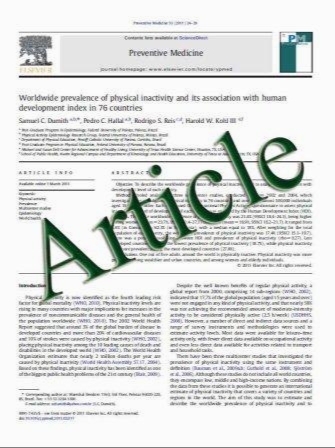Uniocular and binocular fields of rotation measures: Octopus versus Goldmann
- نوع فایل : کتاب
- زبان : انگلیسی
- مؤلف : Fiona J. Rowe & Sahira Hanif
- چاپ و سال / کشور: 2011
Description
Purpose To compare the range of ocular rotations measured by Octopus versus Goldmann perimetry. Methods Forty subjects (20 controls and 20 patients with impaired ocular movements) were prospectively recruited, age range 21–83 years. Range of uniocular rotations was measured in six vectors corresponding to extraocular muscle actions: 0°, 67°, 141°, 180°, 216°, 293°. Fields of binocular single vision were assessed at 30° intervals. Vector measurements were utilised to calculate an area score for the field of uniocular rotations or binocular field of single vision. Two test speeds were used for Octopus testing: 3°/ and 10°/second. Results Test duration was two thirds quicker for Octopus 10°/second than for 3°/second stimulus speed, and slightly quicker for Goldmann. Mean area for control subjects for uniocular field was 7910.45 degrees2 for Goldmann, 7032.14 for Octopus 3°/second and 7840.66 for Octopus 10°/second. Mean area for patient subjects of right uniocular field was 8567.21 degrees2 for Goldmann, 5906.72 for Octopus 3°/second and 8806.44 for Octopus 10°/second. Mean area for left uniocular field was 8137.49 degrees2 for Goldmann, 8127.9 for Octopus 3°/second and 8950.54 for Octopus 10°/second. Range of measured rotation was significantly larger for Octopus 10°/second speed. Conclusions Our results suggest that the Octopus perimeter is an acceptable alternative method of assessment for uniocular ductions and binocular field of single vision. Speed of stimulus significantly alters test duration for Octopus perimetry. Comparisons of results from both perimeters show that quantitative measurements differ, although qualitatively the results are similar. Differences per mean vectors were less than 5° (within clinically accepted variances) for both controls and patients when comparing Goldmann to Octopus 10°/second speed. However, differences were almost 10° for the patient group when comparing Goldmann to Octopus 3°/second speed. Thus, speed of stimulus must be considered if wishing to use these perimeters interchangeably.
Graefes Arch Clin Exp Ophthalmol (2011) 249:909–919 DOI 10.1007/s00417-010-1596-2 Received: 15 June 2010 / Revised: 8 October 2010 / Accepted: 2 December 2010 / Published online: 18 January 2011


